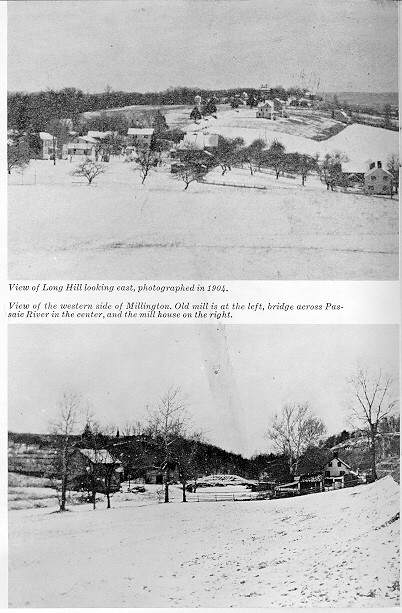Passaic Township now
Long Hill Township

Over 200,000,000, Long Hill Township was much different geologically. During this time there was considerable volcanic action, especially the eruption of great sheets of lava which solidified. Long Hill as well as the Watchung Hills were formed by such lava sheets. Huge lizards and dinosaurs were animals that roamed this land at that time. The Ice Age followed. The Wisconsin Glacier started its southward movement about 50,000 years ago. In time the ice sheet melted and started to retreat back towards Patterson. As ice melted a lake was formed in a depression in the land , later referred to as Lake Passaic. It was a narrow island now called Long Hill. Eventually the lake ceased to exist. The Great Swamp is the shallow remains of the huge prehistoric body of water. On a 1979 map of New Jersey the entire area of Passaic Township (now Long Hill) was called Long Hill. John Littell who lived in this region in the 1800's made a map which included this area. He referred to Long Hill Township as Long Hill and Passaic Valley. "Passaic" means "valley" in Indian. At that time the Great Swamp was called Stirling Valley. The township of Passaic was established in 1866 by an act of Legislature. Before 1866 this area was the southern part of Morris Township. Besides the present towns that make up the township New Vernon was its northernmost and largest town. According to an 1870 census of Passaic Township the population was 1,625 people. In the 1920's Green Village ( also a part of Passaic Township at one time) and New Vernon were separated from Passaic Township and were brought into the newly formed Harding Township. Long Hill Township (formally Passaic) consists of Gillette, Homestead Park, Meyersville, Stirling, and Millington.